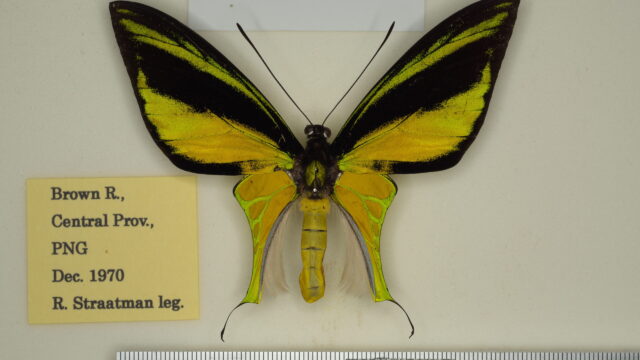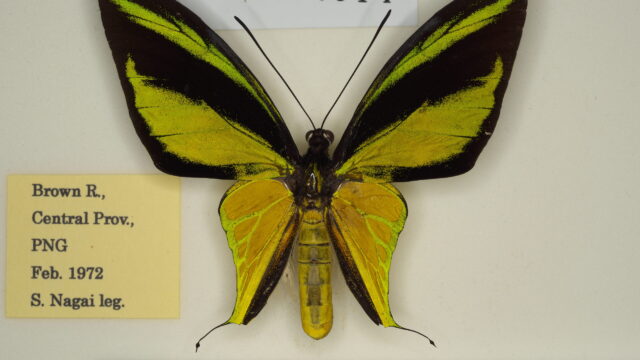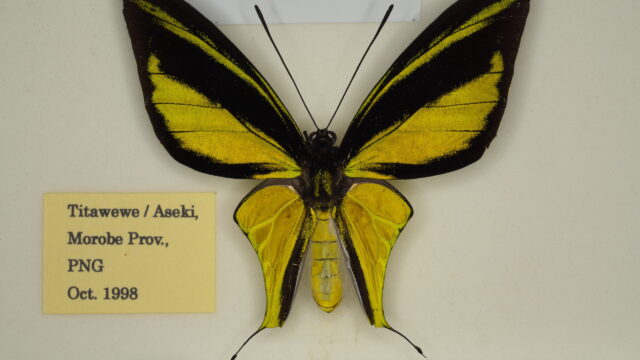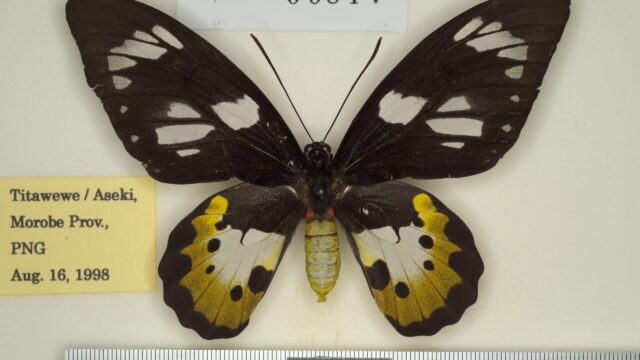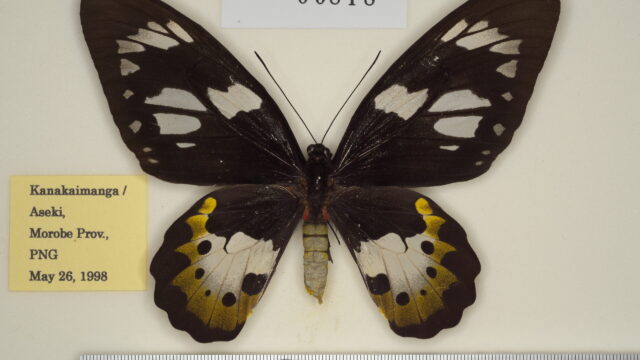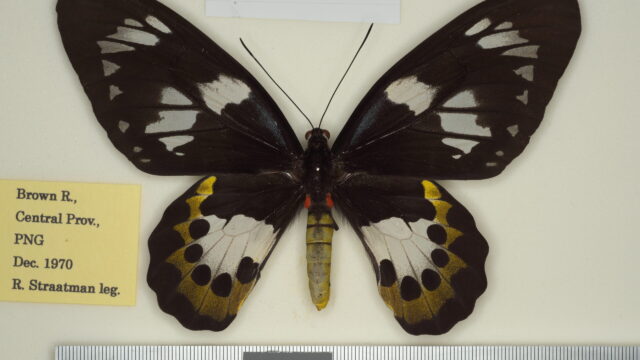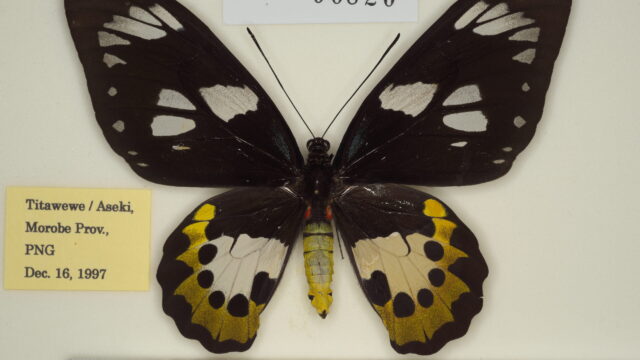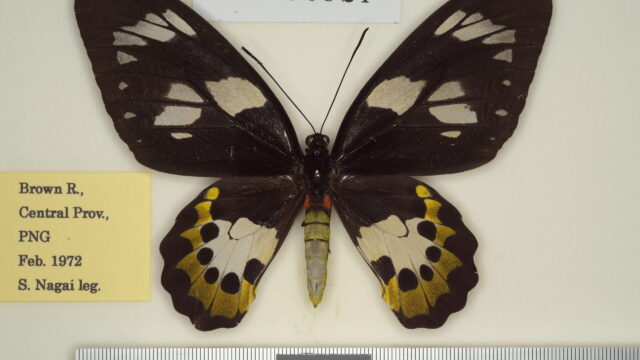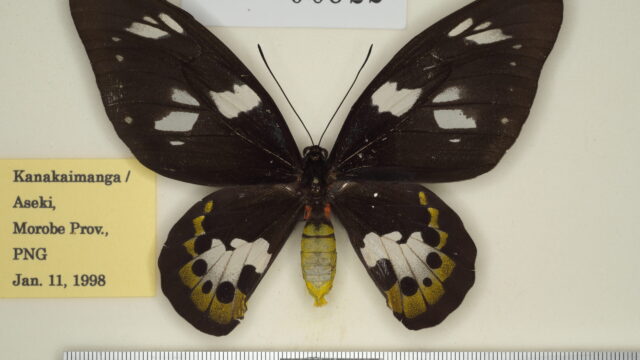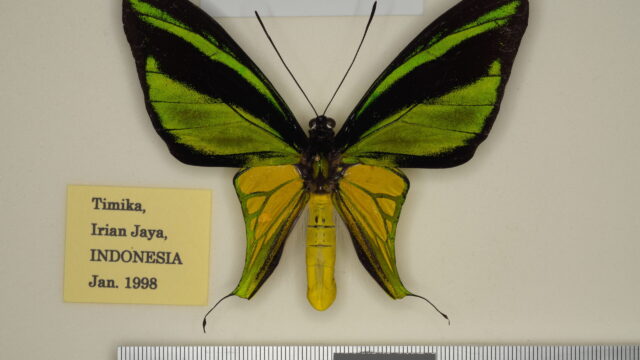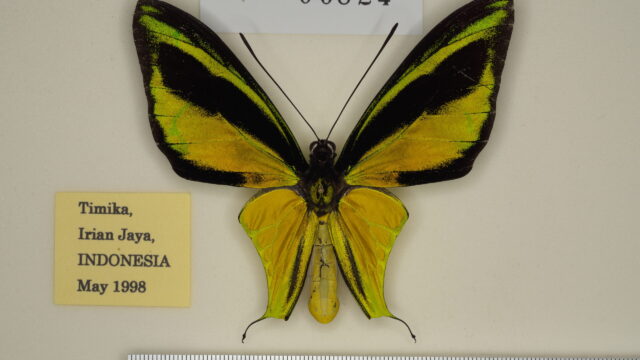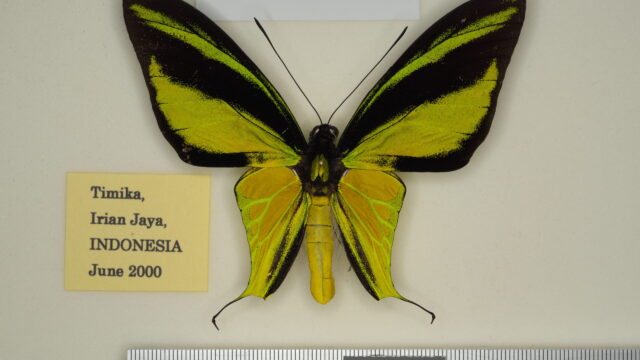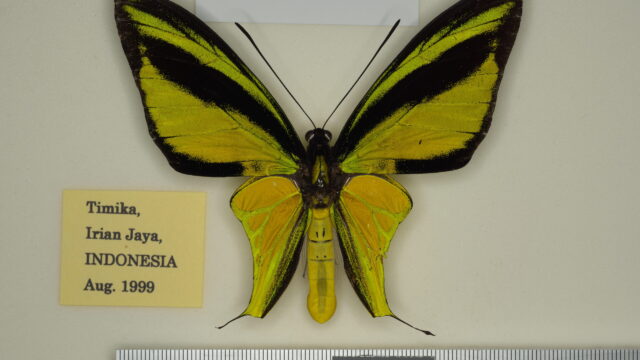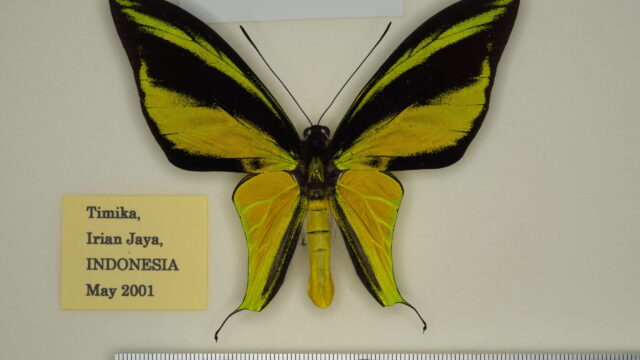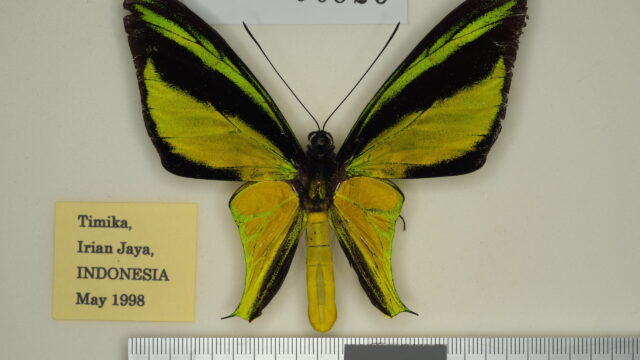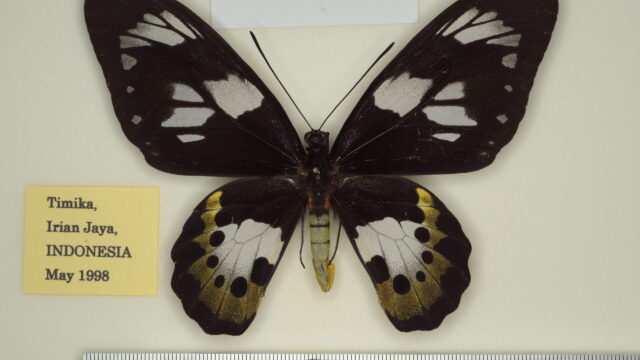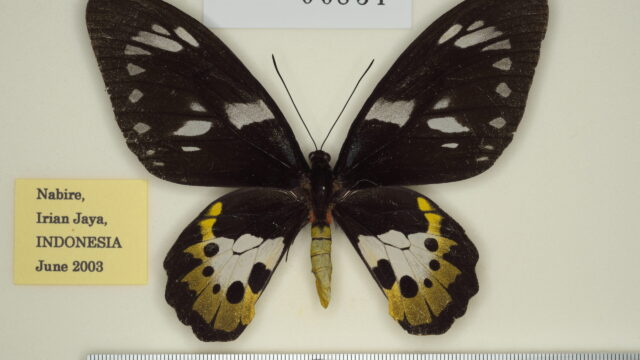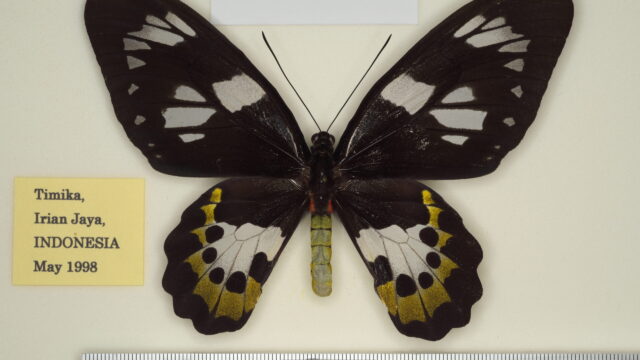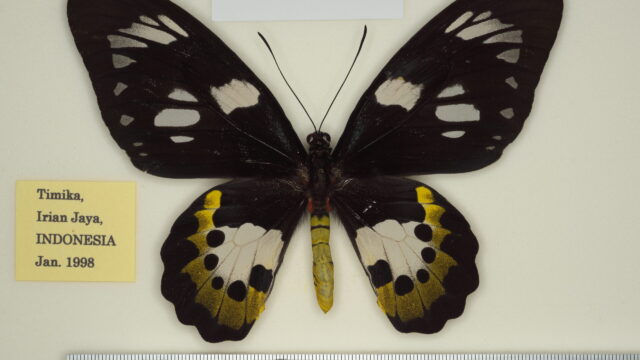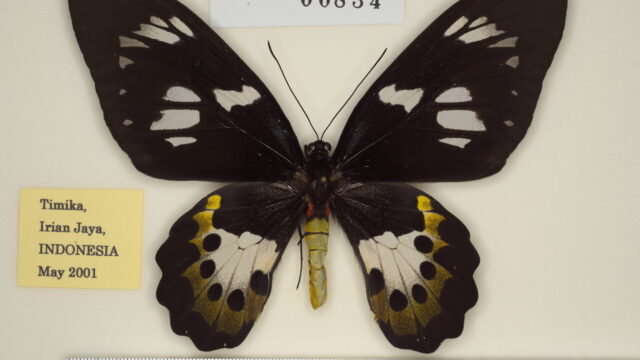3) Sp. meridionalis (Rothschild, 1897)7) [♀] [♂: Rothschild & Jordan, 18998)]
= tarunggarensis (Joicey & Talbot, 1927)4) [♀] [♂: Pasternak, 19816)] (♀: Wanggar River basin, Irian Jaya; ♂: Kamrau Bay area, Irian Jaya)
O. (S.) meridionalis is the smallest of Genus Ornithoptera and differs obviously from the closely allied species paradisea in having much reduced HW with a linear tail, which is a small spatulate projection. While O. (S.) paradisea inhabits the northern area of New Guinea, this species occurs the southern district. In the past, O. (S.) meridionalis was thought to be a separate subspecies from Irian Jaya in the west (ssp. tarunggarensis ) and PNG in the east (nominotypical ssp.), but now that we have been able to be examine many specimens, they are considered to be the same subspecies.
(Distribution) [DCD 10], [Map 40, 41]
INDONESIA [Irian Jaya] Kamrau Bay area, Wandammen Peninsula, Lake Yamur area, Nabire, Nomnagihe (Wanggar River basin), Mapia (Kobowre Mts.), Timika, Yahukimo, Merauke; PNG [WP] Kiunga, [WSP] Frieda River Airstrip, Lake Kutubu area (Pimaga), [MoP] Menyamya, Aseki, Titauwowi, [GP] Kaintiba, Kerema, [CeP] Angabunga River basin, Aroa River basin (Owggara), Doa Plantation, Brown River basin, Cape Rodney, Mamai Estate, Port Glasgow, [MBP] Mailu District, Alotau, Samarai Is.
(Vertical distribution)
0 – 1, 000 m. a. s. l.
(Episodes of discovery and original description)
meridionalis
The first discoverer was A.S. Anthony. He collected one ♀ at Mailu in the Milne Bay area in July 1895, and on the basis of that specimen Rothschild (1897) described it as a subspecies of O. paradisea. A second ♀ was subsequently collected by Meek near Samarai, and Rothschild received that specimen in late 1897. Meek collected the first ♂ on February 4, 1899, and the third ♀ on February 13 of the same year in the Milne Bay area. Rothschild and Jordan (1899) re-described the previously unknown ♂ as a new species because it was clearly different from O. paradisea. In their preface, the authors stated that they were “very surprised that the ♂ was quite different from what they had imagined. The species name meridionalis is Latin for “southern”.
tarunggarensis
The 2♀♀ specimen on which the original description by Joicey and Talbot (1927) was based was collected by C., F., and J. Pratt 25 miles south of Wangar in Geelvink Bay, West Irian, to Nomnagihe (elevation 2000 feet) and 15 miles from the shoreline of the Wangar River (elevation 600 feet), collected in 1921. The ♂, on the other hand, remained unknown for a long time, but was reared by Pasternak from the final instar larvae in the first year of his three field studies in 1978, 1979, and 1980 in the Kamlau Bay area. The subspecies name tarunggarensis is derived from the local language name of the area (no longer used).
(Spotted pattern)
♂: The HW with concaved termen is significantly smaller than the FW. Both sexes have the same spotted pattern as the Paradisea-Species-Group, but the FW have a narrower radial band, a broader cubital band, and a shorter anal band. On HW, semi-translucent golden spots are extended to each discal space, and hairs on the inner margin are long and white. Femur is black.
♀: The pale pattern is basically the same as other that of the subgenus Ornithoptera. Its wing is black with large, pure white spots. It is characterized by the presence of some bluish-gray scales (=basal streak) extended from base of wing to the cell-spot, on the FW. The pale band of the HW extends horizontally, including the edge of the cell-spot. Dark discal spots are round and large. The submarginal area is yellowish-brown and covered with black scales. Femur black.
(Variation)
♂-f. sclavoi Deslisle, 20041): [Aberrant FW pattern] Two golden striae are present where the cubital band has expanded and penetrated deep into the cell.
♂-f. pasternaki Deslisle & Sclavo, 20153): [Aberrant FW pattern] The radial, the cubital, and the anal bands considerably extended and becoming largely connected on FW, so black median band greatly eroded.
♂-f. hiromii Deslisle & Sclavo, 20153): [FW/HW discoloration] Strong blue iridescent basally becoming lighter distally, on FW. The blue iridescence of the cubital band is somewhat shaded by brownish dark patch.
♂-f. maculafuscus Deslisle & Sclavo, 20153): [FW discoloration] Presence of symmetrical dark brownish patches within bilateral cubital bands.
♀-f. odileae Deslisle & Sclavo, 20082): [Particular aberration] FW all pale patches enormously enlarged. HW anal angle pointed, dark discal spots are reduced or absent.
♀-f. kobayashii Deslisle & Sclavo, 20153): [Melanic form] Pale patches reduced to half, and missing the submarginal spots on FW. Dark discal spots on HW are also reduced to half, but dark marginal border enormously broad.
(Larval foodplant)
Pararistolochia meridionaliana, Pararistolochia sp. C (from Timika)5).
